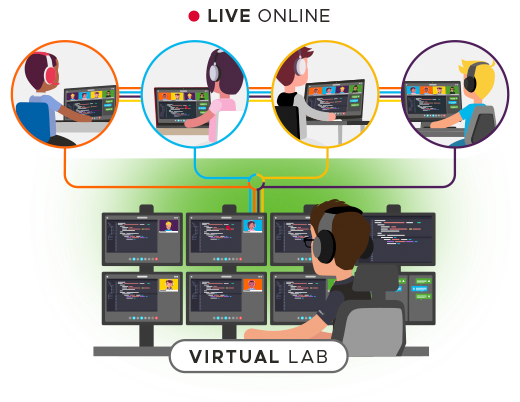A learning
journey
We assess each child as an individual and recommend a tailored tech learning path that will enable them to unlock their full potential.


About this FastTrack
This one-year course combines the full CreativeTech and TechPro series into a powerful, high-impact FastTrack, perfect for children who love to design, build, animate, and explore real-world tech tools.
Across six practical modules, your child will create digital artwork, animate their own characters, build interactive websites, master word processing, crunch numbers with spreadsheets, and construct relational databases using real data and logic. Each project balances creativity with technical skill, encouraging your child to think independently, work efficiently, and express themselves through tech.
They’ll start by learning how to compose and edit digital graphics, move on to building smooth motion with animation, and finish the creative track by designing and publishing their own interactive websites. Then in TechPro, they’ll step into the world of professional tools, learning how to write structured documents, analyse data, and build searchable, intelligent databases.
By the end of this FastTrack, your child will have built a complete portfolio of projects showcasing their creative ideas, technical precision, and software fluency, skills that will set them apart in school and beyond.
Digital Graphics
Word Processing
£275.00
(10 payments)
Total cost: £2750
Assessment Lesson (credited upon enrolment): £35.00 | Enrolment Fee: £55.00 | Catch up lesson: £35 per lesson*
* Catch up fees are correct for the current academic year, please see all course fees, for details of any upcoming fee changes.
Digital Animation
Spreadsheets
£275.00
(10 payments)
Total cost: £2750
Assessment Lesson (credited upon enrolment): £35.00 | Enrolment Fee: £55.00 | Catch up lesson: £35 per lesson*
* Catch up fees are correct for the current academic year, please see all course fees, for details of any upcoming fee changes.
Website Design
Databases
£275.00
(10 payments)
Total cost: £2750
Assessment Lesson (credited upon enrolment): £35.00 | Enrolment Fee: £55.00 | Catch up lesson: £35 per lesson*
* Catch up fees are correct for the current academic year, please see all course fees, for details of any upcoming fee changes.

FunTech Virtual Labs gives your child the freedom to learn cutting-edge coding and tech skills wherever you are.
Our tutors can see your child's screen for the entire lesson, that's why FunTech Virtual Labs are different to the others. It allows tutors to respond immediately if your child needs support, give them a nudge if their attention wanders or set them a new task if they finish ahead of the rest.
We assess each child as an individual and recommend a tailored tech learning path that will enable them to unlock their full potential.
Engagement and technology are at the core of our teaching strategies, with small class sizes guided by technology subject specialists.
We have a structured, project-based curriculum that’s continuously refined by our in-house development team to keep it ahead of the curve.
Using a state-of-the-art virtual learning platform, we deliver tutor-led classes in real-time with a 1:4 tutor student ratio.
FAQs
A virtual class is a scheduled interactive online lesson delivered by FunTech.
All our virtual software is Citrix driven and so extremely safe
All students receive a virtual orientation lesson before the start of their course.
For each lesson, your child will receive an email invitation containing a link allowing them to log onto our virtual classroom. We schedule a maximum of four students who are predominately based in the UK, however, a few of our students have moved abroad due to parents work commitments and therefore log in from further afield.
The lessons themselves are the exact same as is delivered in a physical classroom. Through our virtual classroom environment, your child has the option to raise their hand, ask questions and also speak to the other students in their class (though we do have a mute all option '- just in case!)
FunTech teachers are able to pass control of their monitor to an individual student or share it amongst all the students. With permission, we can take control of a students' monitor to demonstrate concepts, share common mistakes or outstanding work as we would in a physical classroom.
All our virtual software is Citrix driven and so extremely safe
Good internet connection, headphones with a microphone and a computer.
All our virtual software is Citrix driven and so extremely safe




